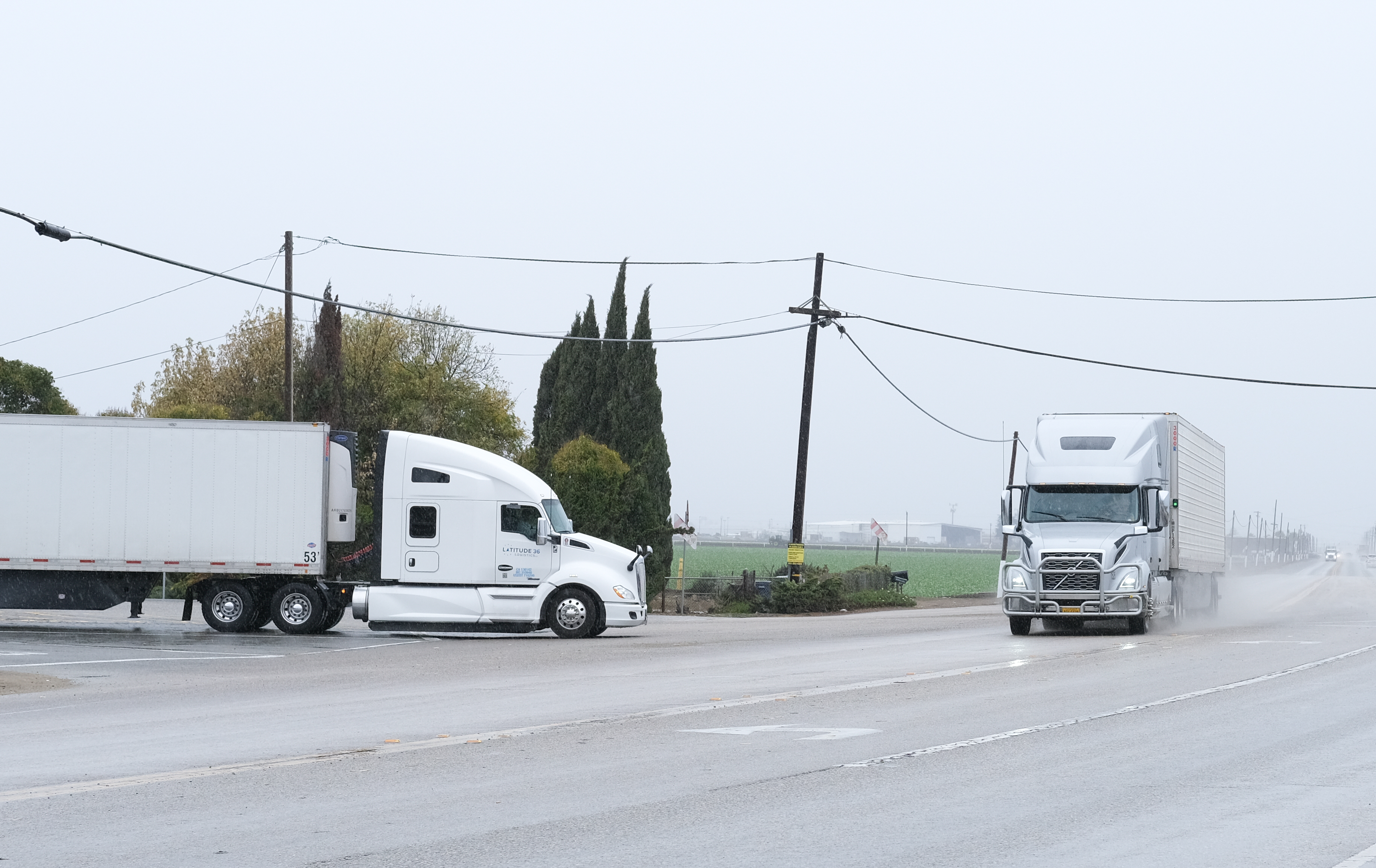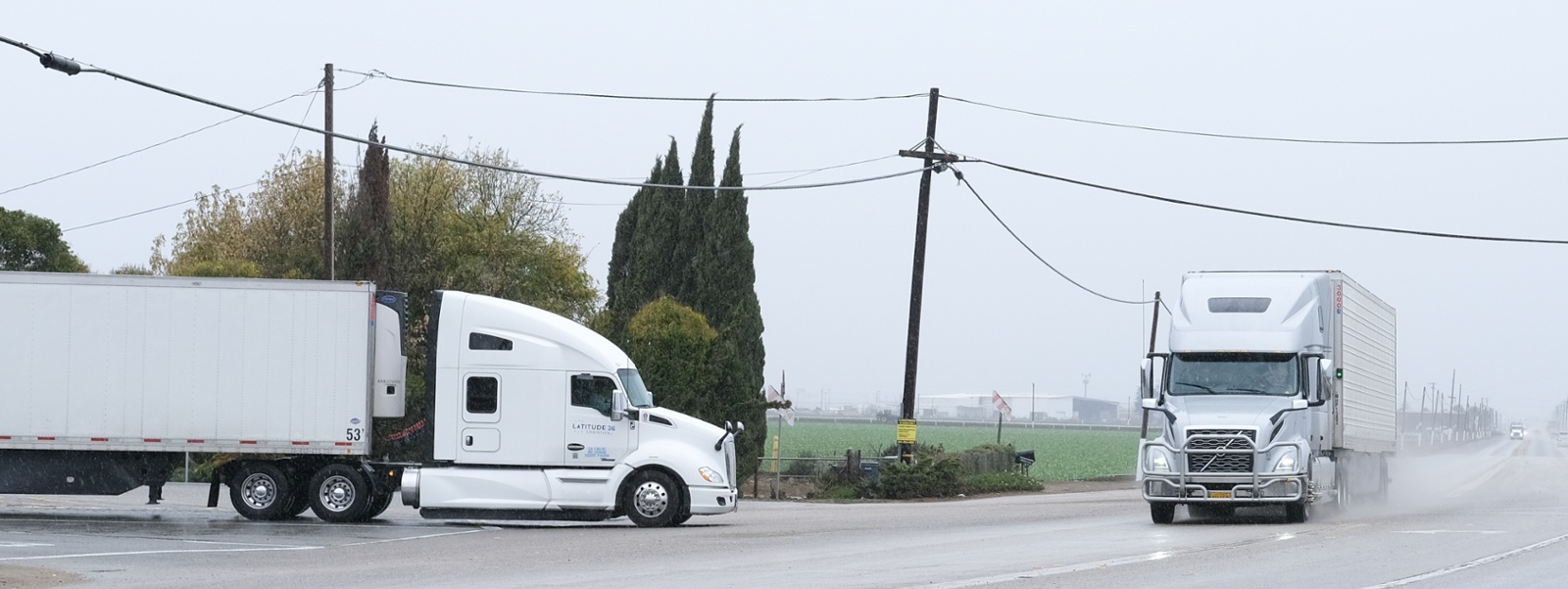Tech lags behind as clean trucking mandates begin

California agricultural operations are struggling to convert trucking fleets to meet new state mandates for increasing the number of zero-emission big-rigs on the road.
Photo/Caleb Hampton.

By Caleb Hampton
California fleet owners are scrambling to comply with new rules designed to limit emissions from diesel-powered big rigs and other heavy-duty vehicles.
These trucks and buses, while a small fraction of the state’s vehicles, emit more than half the vehicle-related pollution in California, according to regulators. But as new standards go into effect, operators report the technology and infrastructure they need for compliance is not yet available—and could still be years away.
“We are not opposed to electrification,” said Steven Fenaroli, director of political affairs for the California Farm Bureau. “The reality is that the technology just isn’t there to meet the requirements.”
The Mahrt family, which owns the Petaluma Egg Farm, has been stumped by a rule announced in 2022 that gave trucking firms until Jan. 1 of this year to convert at least 15% of refrigerated box truck fleets to zero-emission vehicles.
The Sonoma County chicken farmers own 10 diesel-powered “reefer trucks” that they use to haul organic eggs from their farm to restaurants and grocery stores around the Bay Area. The new rule means they need to replace two of the trucks with zero-emission vehicles or install battery-powered refrigerating units.
“The problem is they do not exist,” said Jordan Mahrt, manager at Petaluma Egg Farm, referring to battery-powered units that are compatible with the family’s diesel-powered trucks. He said that would be the most affordable solution, and there are industry talks of developing such a unit. But he added, “No one has even seen a prototype yet.”
The other option is to purchase brand new zero-emission refrigerated trucks. The first models hit the market earlier this year. The Mahrts ordered one. But the manufacturer has not told them how long it will take to build and deliver their truck. “I don’t know when it’s going to be made,” Mahrt said.
The family had no choice but to seek an exemption from the rule. To do so, it needed to submit its truck purchase order, proof that it inquired with a utility provider about installing charging units, and other documents. “It’s a complicated process,” Mahrt said.
Trucking firms also reported obstacles to integrating zero-emission drayage trucks into their fleets. Under California’s Advanced Clean Fleets rule, which was adopted last year by the California Air Resources Board, beginning this year any new drayage truck registered in the state must be a zero-emission vehicle. The rule requires the phaseout of all diesel-powered drayage trucks in California by 2035 and nearly all diesel trucks in the state by 2042.
In December, the air resources board announced it would delay enforcement this year pending permission from the U.S. Environmental Protection Agency
Drayage trucks haul agricultural products and other cargo in shipping containers between ports and processing or packing facilities. CARB put them first in line for conversion to zero-emission vehicles because it said their emissions especially impact underserved communities adjacent to ports and industrial zones, and because their shorter routes are more likely to fall within the limited range of the battery-powered heavy-duty vehicles already on the market.
But operators, especially those serving rural agricultural regions, say technological limitations and market forces make using zero-emission drayage trucks a nonstarter.
Joe Antonini, owner of Antonini Freight Express, has a fleet of more than 60 drayage trucks that haul bulk wine, tomato paste and other products between the Central Valley and the Port of Oakland.
The wineries and canneries always max out the 80,000-pound limit trucks in the U.S. can haul. Zero-emission truck batteries weigh up to 16,000 pounds, displacing up to a third of the truck’s carrying capacity. To haul the same wine, Antonini would need more trucks, drivers and hours. To stay in business, he would have to pass the extra cost on to the winery, “but I would not be able to,” he said, because the winery would just hire someone else to haul their wine.
Zero-emission drayage trucks also lack the range to cover many of the routes the company runs. The average daily distance a drayage truck travels is 95 miles, within the 100-150 mile range of commercially available battery-powered trucks. But Antonini’s trucks often travel routes of more than 400 miles in a day.
“Our trucks don’t finish their trip right outside the port,” said Stefano Antonini, Modesto terminal supervisor for the company. “They come all the way back to the valley,” sometimes going from Stockton to Madera to Oakland to Lodi and back to Stockton in a day.
Last year, fleet owners were impacted by the final phase of a different rule, which prohibited heavy-duty vehicles made before 2010 from operating in California after Jan. 1, 2023. The rule especially affected small trucking businesses and farmers that lacked the capital to invest in new trucks and were using older trucks on a seasonal or part-time basis.
Keith Nilmeier, who farms 220 acres of oranges, peaches, apricots and grapes in Fresno County and runs a trucking business, said the rule slashed his fleet from 18 trucks to eight trucks during the past year.
“We were trying to stay compliant, but it just kept going, and there was no relief,” Nilmeier said. “It takes a big bite out of everything.”
Nilmeier and other operators said they remain reluctant to invest in zero-emission trucks, which cost around $450,000, citing the high cost and deficiencies in the vehicles’ range and carrying capacity.
California is spending billions on subsidies to make zero-emission trucks more affordable, but fleet owners said the cost to them is still double that of buying a diesel truck.
They also voiced concerns that California lacks the charging infrastructure to support electric truck fleets, and the state’s utility providers lack the grid capacity to support the infrastructure.
“Those are all deal killers,” Joe Antonini said.
(Caleb Hampton is an assistant editor of Ag Alert. He may be contacted at champton@cfbf.com.)




